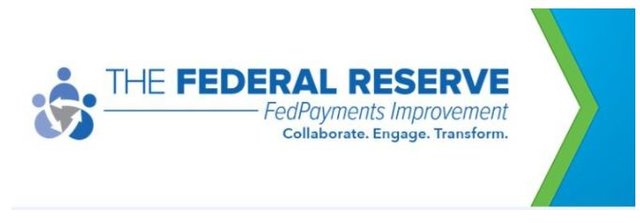REGULATION
A look at the Fed as a key player in the payments system
With Covid-19 reshaping the payments landscape, the Federal Reserve continues to play a wide-ranging participatory role. Mohamed Dabo reports on the Fed’s general policy

T
he US central bank seeks “to promote the integrity and efficiency of the payments mechanism and to ensure the provision of payment services to all depository institutions on an equitable basis, and to do so in an atmosphere of competitive fairness”.
Given the size, speed, and interdependencies of payments, this mission will continue to be even more important than it was when the Federal Reserve was established in 1913.
The background
Since the Fed’s inception, its active involvement in payments processing has been an integral part of the development of the US financial system.
Congress, responding in part to the breakdown of the check-collection system in the early 1900s, made the body an active participant in the payments system when it established the Federal Reserve in 1913.
At that time, Congress envisioned that the Fed would play a dual role as operator and regulator of the payments system. Congress reaffirmed its commitment to this dual role in the Monetary Control Act of 1980 and the Expedited Funds Availability Act, enacted in 1987.
The Fed has a wide-ranging participatory role in the payments system. Reserve banks process cheques and provide a nationwide network for the collection of items ineligible for processing through normal cheque-collection channels, such as matured coupons, bonds and banker’s acceptances.
The Fed assisted in developing the automated clearinghouse system for small-dollar electronic payments, and now provides a nationwide electronic ACH network.
Depository institutions transfer large-dollar payments over the Fed’s nationwide wire transfer system (Fedwire). It also operates a book-entry securities service for the safekeeping and transfer of United States Treasury and agency securities.
Finally, the Fed supports a variety of private clearing arrangements by providing settlement services through its nationwide network of account relationships. This participatory role has served the nation well, contributing directly and indirectly to widespread public confidence in a payments system that is quick, sure, and efficient.
The Fed’s participatory role is well suited to the structure of the US financial industry. The country has a highly fractionalised banking system spread over wide areas with different types of institutions having differing payments needs.
As interstate banking spreads, the underlying public-policy rationale for the Fed’s operational presence in the payments system will continue to be an important consideration.
The Fed will continue to bring to payments markets an overall concern for safety and soundness, promotion of operating efficiency, and equitable access.
Indeed, those considerations relating to integrity, efficiency and access to the payments system will remain at the core of the Fed’s role and responsibilities regarding the operation of the payments system.

The Fed has a wide-ranging role in the payments system. Image: Federal Reserve
The integrity of the payments system
A reliable payments system is crucial to the economic growth and stability of the nation.
The smooth functioning of markets for virtually every good and service is dependent upon the smooth functioning of banking and financial markets, which in turn is dependent upon the integrity of the nation’s payments system.
History shows that fragility of a country’s payments system can precipitate or intensify a general economic crisis. The breakdown of the payments machinery in the US during the panic of 1907, which helped to precipitate the creation of the Fed, is a case in point.
More recently, the 1974 failure of a relatively small German financial institution, Bankhouse ID, Herstatt, and the consequent uncertainty regarding payments through private clearing networks, temporarily caused substantial disruption in the US payments system. This clearly demonstrated that financial failures, including those abroad, can transmit systemic effects, via the payments system, to financial institutions in all parts of the world.
As payments-system participant and central bank, the Fed’s roles are integrally related. Its direct and ongoing participation in the operation of the payments system enhances the integrity of the payment process.
For example, the Fed’s final and irrevocable Fedwire funds transfer service reduces the risk that failure of one institution could be transmitted rapidly to other institutions.
In addition, in order to carry out its responsibilities as central bank, the Fed frequently provides payment services to troubled depository institutions that other providers of payment services may not serve because of the risks involved.
This helps to ensure that the inability of a depository institution to make or process payments will not trigger its insolvency and that the institution’s problems can be resolved in an orderly fashion with minimum disruptive effects.
The efficiency of the payments system
Federal Reserve involvement in the payments system promotes efficiency for a variety of reasons.
The Fed has a public-interest motivation in seeking to stimulate improvements in the efficiency of the payments system. It has worked closely with other payment service providers to develop and use advanced technology and procedures.
Because of its day-to-day operating presence in the payments system, it has the know-how to contribute to technical advances as well as the ability to help promote their implementation.
Federal Reserve involvement may be particularly appropriate for advances that require widespread cooperation among depository institutions – for example, the introduction and implementation of MICR encoding of checks.
Moreover, Federal Reserve involvement as a neutral and trusted intermediary can facilitate acceptance of innovations that improve the efficiency of the payments system.
Additional efficiencies result from the scope of the Fed’s participation in the payments system. As the Congress anticipated in the Monetary Control Act of 1980, competition between the Fed and other providers of payment services has resulted in a more efficient payments system.
Both the Fed and other service providers have been prompted by competition to process payments as efficiently as possible and to improve the quality of the services offered.
It is recognised that the most significant further gains in payment efficiency are likely to come from the application of advances in electronic technology. These gains will become more widespread as new technology becomes available to all depository institutions, regardless of their size or location.
The Fed will continue to promote the use of electronics in providing payment services where it can demonstrate that this technology will enhance the efficiency or effectiveness of its services.
The provision of payment services to all depository institutions
Federal Reserve payment services are available to all depository institutions, including smaller institutions in remote locations that other providers might choose not to serve.
Under the Monetary Control Act, in making payment services available to depository institutions, the Federal Reserve must give due regard to the provision of an adequate level of services nationwide.
Since implementation of the act, the reserve banks have provided access to Federal Reserve services to non-member banks, mutual savings banks, savings and loan associations, and credit unions.
Fiscal agency functions
In addition to providing payment services to depository institutions, the Fed, as fiscal agent, provides a variety of services on behalf of the United States Treasury and other government agencies. These include the creation, safekeeping, and transfer of book-entry records evidencing ownership of the public debt and the processing of government payments.
Depository institutions benefit from production efficiencies that result when the facilities and expertise required to provide these fiscal-agency services are used to produce other similar services for depository institutions.
Similarly, paper and electronic payment services are supplied to the Treasury and other government agencies more efficiently because the Fed also offers these services to depository institutions.

The Fed also provides services on behalf of the US Treasury. Image: Federal Reserve